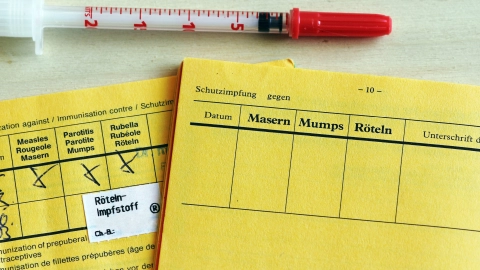Conditions Toxoplasmosis
ICD codes: B58 What are ICD codes?
Around a third of all people worldwide are carriers of the parasite Toxoplasma gondii, the pathogen that causes toxoplasmosis. Only around 5% show signs of a disease which can then be life-threatening. This article provides more information about the cause of toxoplasmosis, how to prevent it and how to treat it.
At a glance
- Around a third of the world’s population are carriers of the toxoplasmosis pathogen Toxoplasma gondii.
- An infection with the pathogen is symptom-free for more than 90%.
- Toxoplasmosis is life-threatening for people who have a weak immune system.
- If women get infected for the first time during their pregnancy, it can cause damage to the unborn children, especially eye and nerve damage.
Note: The information in this article cannot and should not replace a medical consultation and must not be used for self-diagnosis or treatment.

What is toxoplasmosis?
Toxoplasmosis is a zoonotic disease, i.e. a disease that is transmitted from animals to humans. It is spread worldwide and is caused by a parasite called Toxoplasma (T.) gondii. The parasite consists of only one cell and lives within its host cells.
All mammals can be infected by T. gondii, but it is only feline animals like cats in which the parasites reproduce sexually. They excrete non-infectious parasite types (oocysts) with their stool. These then mature in infectious parasite stages (sporozoites) in the environment within 48 hours. When people get infected while gardening or eating contaminated fruit and vegetables, the sporozoite-containing oocysts enter the intestines where the parasites multiply and from there pass into other tissues. The protozoa form permanent stages, called cysts, mainly in the brain, in the retina of the eye and in the skeletal and heart muscles. These cysts remain in the tissue for life.
People can also get infected with the pathogen by consuming raw or insufficiently processed, cyst-containing meat, for example pork or poultry.
Unborn babies can develop prenatal toxoplasmosis when the mother is infected by T. gondii for the first time during her pregnancy.
What are the signs of a toxoplasmosis infection?
In most cases, children and adults with a normally functioning immune system do not show any symptoms when they are infected with T. gondii.
Only around 5% have flu-like symptoms with:
- fever
- headache
- muscle pain
- swollen lymph nodes in the head and neck area
These symptoms go away on their own. Afterwards, the pathogen remains in the body for life, causing no further symptoms. Inflammation of the veins and retina in the eye and/or an inflammation of the brain only occur extremely rarely.
Women who have been infected with T. gondii before pregnancy cannot pass the parasite to their child. This is only possible if a woman is infected for the first time during her pregnancy. This form of toxoplasmosis sometimes disrupts the development of the child’s nervous system and causes them to have serious symptoms. These include eye and brain damage. It is also possible for pregnant women to suffer a miscarriage.
Toxoplasmosis can also be life-threatening for people with immune deficiency. These include patients with AIDS and recipients of organ donations.
When the dormant pathogen reactivates, or less often with a new infection, they get inflammation of the eye, brain and other organs.
How common is toxoplasmosis?
Approximately one third to half of the population are carriers of the toxoplasmosis parasite.
In Germany, the infection rate among adults per year of life is increasing by around 1% and is more than 70% in those over 70. It is much higher in East Germany than it is in West Germany.
How can toxoplasmosis be prevented?
People with a drug-suppressed immune system and pregnant women who are not yet infected with T. gondii or don’t know if this is the case can protect themselves from an infection.
The following measures prevent toxoplasmosis:
- Avoid eating meat that is raw or not fully cooked. Freezing at minus 21 degrees or heating for 20 minutes at a core temperature of at least 50 degrees kills off the pathogen.
- Wash fruit and vegetables thoroughly before eating.
- Wash hands thoroughly before eating.
- Wash hands after contact with raw meat and after gardening, work in the fields or excavation work and after a visit to the playground.
- If pregnant women keep a cat in the home, they should only give them canned or dry food.
- Cat litter boxes should be cleaned daily with hot water by people who are not pregnant and not immunocompromised.
How is toxoplasmosis diagnosed?
If toxoplasmosis is suspected, doctors take from their patients blood samples and samples of any other body fluids in which the parasites may be found.
Laboratory tests then show whether the immune system has already come into contact with the pathogen or whether this is a new infection. Molecular biology techniques can also detect the genetic material of the parasite.
If patients show symptoms of encephalitis, doctors can also carry out brain scans with contrast media. This is important to rule out other diseases that show similar symptoms.
If the eye is affected, ophthalmologists examine the back of the eye with special devices. The back of the eye is where they are able to recognize typical inflammatory changes and scarring.
How is toxoplasmosis treated?
There are a range of medicines that can disrupt the parasite’s metabolism. Some antibiotics are also effective against T. gondii.
The following drugs are often used for an active toxoplasmosis infection in patients who have a suppressed immune system, with eye involvement and before or after the birth: spiramycin, pyrimethamine, sulfadiazine, clindamycin and atovaquone.
In order to avoid serious spinal cord damage to newborns, these are also given folinic acid. Uncomplicated toxoplasmosis acquired after birth is usually only monitored. Treatment is usually not required.
Important: Folinic acid is not the same as folic acid. Folic acid is a vitamin important in pregnancy. Folinic acid is a breakdown product thereof and is used as a drug.
- Bundesamt für Risikobewertung (BfR). Toxoplasmen (Toxoplasma gondii). Aufgerufen am 12.11.2020.
- European Centre for Disease Prevention and Control (ECDC). Facts about toxoplasmosis. Aufgerufen am 12.11.2020.
- European Centre for Disease Prevention and Control (ECDC). Congenital toxoplasmosis - Annual Epidemiological Report for 2017. Aufgerufen am 12.11.2020.
- Institut für Medizinische Mikrobiologie der Universität Göttingen. Allgemeine Informationen zur Toxoplasmose. Aufgerufen am 12.11.2020.
- Pleyer U et al., Toxoplasmose in Deutschland Epidemiologie, Diagnostik, Risikofaktoren und Therapie. Deutsches Ärzteblatt International 2019; 116: 435-44. Aufgerufen am 12.11.2020.
- Robert Koch-Institut (RKI). Epidemiologisches Bulletin 27/2003: Toxoplasmose: Wichtige Ergänzung der Labordiagnostik durch eine quantitative real-time PCR. Aufgerufen am 12.11.2020.
- Robert Koch-Institut (RKI). Infektionsepidemiologisches Jahrbuch meldepflichtiger Krankheiten für 2018. Aufgerufen am 12.11.2020.
- Robert Koch-Institut (RKI). Neue Ansätze zur Diagnose und Therapie der Toxoplasmose. Aufgerufen am 12.11.2020.
- Robert Koch-Institut (RKI). Vorkommen und Bedeutung von Toxoplasma gondii in Deutschland. Aufgerufen am 12.11.2020.
Reviewed by the German Society for Hygiene and Microbiology (Deutsche Gesellschaft für Hygiene und Mikrobologie e.V.)
As at:





